Hello Writeblr, here is my feeble walk into the light. My name's Drist. They/Them/20. WIP: The Ave's Egg My art: @intheeunder My casual: @salutationsmydude
Don't wanna be here? Send us removal request.
Text
Consider any project progress, even if it's crappy or unfinished or whatever excuse we're gonna come up with today. Congratulate the work and yourself. I worked on a project for 7 years and I admit now that I was completely over my head; the WIP was so huge and most of the time I didn't even know what I was doing, but just because I was in over my head doesn't mean I regret a single time I spent writing, learning how to craft a story, how to build a world. Nothing is ever wasted in writing.
And hey, maybe one day I'll pick up that project and it'll be amazing, because I'll be ready. Who knows? I just know we should thank every single project we've ever worked on for pushing us a little closer to where we want to be, and for making us the writers we are today 💖
76 notes
·
View notes
Text
That post about writing motorcycle scenes I've been meaning to write
Riding a bike is one of those things that’s a very physical experience, so if you haven’t ridden, then there’s a lot you will naturally not be aware of. I love motorcycle scenes in stories, but over the years I’ve noticed that scenes written by non-riders almost always make the same mistakes. They’re ubiquitous in fact, to the point that if you haven’t been there to learn the contrary yourself, it’s natural to assume that’s how it actually works.
The first thing to know about motorcycles is that when driving, the motorcycle performs as an extension of you. It’s almost cybernetic, the way your mass and balance fuse with the machine’s, the way it transmutes your sense of your surroundings and the surface you’re driving on, and the sense of the bike itself and how it’s performing.
Most notably, the driver’s center of gravity becomes the central steering mechanism. At speeds faster than around 10 mph, the driver steers primarily through shifting their center of balance. If you want to turn left, you lean your body left. You’re actually tilting yourself and the motorcycle to take curves and corners.
When carrying a passenger, then, the passenger needs to shift their center of gravity along with the driver’s. It’s like taking the ‘follower’ position in partner dancing. You lean WITH them; not less, because then your weight counters theirs and they end up not turning (which can be highly bad if, say, the road does not go that way), and not more, because then the bike could tip right over.
Being a good passenger on a bike is not a huge learning curve for most people, but there is a learning curve. And some people have more of a knack for it than others. Some people are natural back-seat drivers, for whatever reason overly pushy, eager, demanding, or determined that they know better than you, and have a habit of making it hard on the driver. I’ve had people tell me they hate riding pillion even if they’re good at it, because they don’t like how out-of-control it feels. I detest it myself, in fact; I’d far rather be driving, and it’s a constant struggle for me to just follow along and behave myself.
This means, though, that carrying a passenger who weighs significantly more than you can be a tricky business. I weigh about 110, and when carrying a rider weighing significantly more than that, it’s awfully easy to crash if the passenger tries to back-seat steer. (A way to mitigate this, especially for new passengers, is to simply take 15 minutes or so to bump around quiet local roads at low speeds so that the driver and passenger can familiarize themselves a bit with minimal risk to themselves.)
Now, undoubtedly the #1 most-committed mistake I see from almost everybody who writes about motorcycles (and for that matter, a lot of unsuspecting new passengers try it in real life) is the ‘wrapping arms around the driver’s waist’ business. It’s so common that this line is practically required by law when somebody’s writing a motorcycle scene, but seriously: DON’T DO THAT. <–The all caps there is not for shaming; it’s for emphasizing the safety issues. It’s not only uncomfortable for the driver, it’s potentially dangerous. It makes it hard to steer, hard to breathe comfortably, and easy to get jerked off balance and into a crash.
In a similar vein, holding onto the driver via grabbing their clothing is ill-advised. This can lead to getting jerked off balance, having seams dig in painfully, and being choked by fabric.
What to do instead: The rider sitting pillion should brace their hands on either side of the driver’s waist.
I know, if you’re in it for the sexual tension, this sounds less sexy, but I’m here to tell you that’s a filthy lie. A passenger who’s sitting properly is basically molded onto the driver’s back. Riding with/being a passenger on a bike is a startlingly intimate experience. There’s a lot of trust and teamwork involved, which takes place at a kinesthetic level. It feels a lot like dancing, as I said before, or maybe partnered sports, where the collaboration is happening at a physical, bone-deep level that often skips right past the conscious intellect.
Now, sometimes (you may’ve seen this on the road) you’ll have passengers who prefer to hang onto a part of the bike–bits of the frame, maybe, or a ‘sissy bar’/seat back sticking up from the back. It’s not uncommon, but it’s a bad habit because the passenger is never quite as in-tune with the driver this way, and if something happens–a tire slips in a puddle, for example–their weight moving in the wrong direction can end up jerking the bike out of the driver’s control.
Another thing I see a lot of writers do in stories that doesn’t work in real life: unfortunately, helmets are NOT easily swappable. They’re designed to clasp the head; a well-fitted helmet should not move on your head at all, even if you shake your head hard (though it also shouldn’t be tight enough to exert uncomfortable pressure). A helmet that fits loosely is useless at best and dangerous at worst. One that’s too tight is either painful or doesn’t go on at all. It doesn’t take much difference in the size of two people’s heads for one person’s helmet to not fit the other person properly. (And even if they’re the same size, that doesn’t necessarily mean it’ll be comfortable for more than short-term wear, but hey.)
Also, the stupid things are ridiculously expensive–especially the full-face models–so most bikers aren’t lucky enough to have a bunch of extras just laying around.
Another tip, both for writing and riding: riding pillion on a sports bike (those sleek ones where the driver’s crouched and leaning forward like a race jockey) is a miserable freaking experience. On a lot of models, you’re perched up there on something that barely counts as a seat and leaves you constantly feeling like you’re about to slide off the back; your legs are pushed up into a crouch; you’re hunched like a monkey over the driver; and possibly you’ve got a scalding-hot muffler pressed up against your calf.
(Pro tip: if anybody ever invites you for a ride on their bike and you’re wearing shorts, pay attention to where the muffler’s located in relation to the foot pegs.)
Now, what is it about motorcycles that makes some of us bikers go into a lathered-up frenzy at the idea of riding? It’s because it FEELS SO DAMN ALIVE.
Look. It’s like…life these days is, well, canned. We spend a lot of our time in pods–houses, cars, subway trains–breathing tinned air, walking around on pavement or carpet… But when I’m on a bike, it’s me and a 360 degree panorama of the world, and there’s nothing between me and it. Some people get off on the risk of that, but for me it’s a matter of immersion. When I ride, I can feel the cool humid air rolling down from under a forested hillside. I can smell the road dust, the oil, the exhaust, the herby scent of weeds and wildflowers on the roadside, the river I’m driving near, the shady scent of a forest, the roadside fruit stand…and I’m not talking in that wafty, broken-up way you get if you roll the car doors down. It’s like driving into a wall of scent, crashing through one bubble after another of temperature changes and smells and sounds and sights, and I have this bike underneath me that’s rumbling and vibrating and moving like it’s part of me, and it’s just the most powerful sense I’ve ever had of being in charge of my own life and not hiding from the world. I can see it, and it can see me, and yeah, that’s a bit dangerous, but it’s also real.
17K notes
·
View notes
Photo

The Dragon-helm of Dor-lómin by Elena Kukanova
732 notes
·
View notes
Text
How To Foreshadow
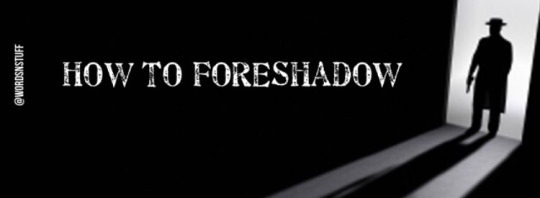
Foreshadowing is a necessary part of any well-executed story. And yet, despite all its prevalence and importance, it’s actually a concept that many authors have a hard time getting their minds around. If we sift foreshadowing down to its simplest form, we could say that it prepares readers for what will happen later in the story.
At first glance, this may seem counter-intuitive. Why would we want readers to know what’s going to happen later in the story? If they know how the book turns out, they’ll have no reason to read on.
True enough. So let me reiterate. The point of foreshadowing is to prepare readers for what happens later in the story. Not tell them,just prepare them.
Foreshadowing’s great strength lies in its ability to create a cohesive and plausible story. If readers understand that it’s possible that someone in your story may be murdered, they won’t be completely shocked when the sidekick gets axed down the road. If, however, you failed to properly foreshadow this unhappy event,readers would be jarred. They would feel you had cheated them out of the story they thought they were reading. They would think you had, in essence, lied to them so you could trick them with this big shocker.
Readers don’t like to be cheated, lied to, or tricked. And that’s where foreshadowing comes into play.
Foreshadowing, Part 1: The Plant
We can break foreshadowing down into two parts. The first is the plant. This is the part where you hint to readers that something surprising and/or important is going to happen later in the book. If the bad guy is going to kidnap the good guy’s son, your plant might be the moment when your hero notices a creepy dude hanging around the playground. If your heroine is going to be left standing at the altar, your plant might be her fiancé’s ambivalence toward the wedding preparations.
Depending on what you’re foreshadowing, the plant can be blatant or subtle. Subtle is almost always better, since you don’t want to giveaway your plot twists. But, at the same time, your hints have to be obvious enough that readers will remember them later on.
Usually, the earlier you can foreshadow an event, the stronger and more cohesive an effect you will create. The bigger the event, the more important it is to foreshadow it early. As editor Jeff Gerke puts it in The First 50 Pages:
Basically, you need to let us in on the rules. If the climax of your book is going to consist of getting into a time machine and jumping away to safety, we had better have known in the first fifty pages that time travel is possible in the world of your story.
Foreshadowing, Part 2: The Payoff
Once you’ve got your plant in place, all that’s left is to bringthe payoff on stage. If you planted hints about kidnapping, jilting, or time travelling, this is the part where you now get to let these important scenes play out.
As long as you’ve done your job right with the plant, you probably won’t even need to reference your hints from earlier. In fact, you’re likely to create a more solid effect by letting readers put the pieces together themselves.
But you’ll also find moments, usually of smaller events that were given less obvious plants, that will benefit from a quick reference to the original hint (e.g., “George,you big meanie! Now I understand why you wouldn’t choose between the scarlet and the crimson for the bridesmaids’ dresses!”)The most important thing to remember about the payoff is that it always needs to happen. If you plant hints, pay them off. Just as readers will be confused by an unforeshadowed plot twist, they’ll also be frustrated by foreshadowing that excites them and then leads nowhere.
Foreshadowing vs. Telegraphing
The trick to good foreshadowing is preparing your readers on a subconscious level for what’s coming without allowing them to guess the ins and outs of the plot twist. You don’t want your hints to be so obvious that they remove all suspense. In her October 2012 Writer’s Digest article “Making the Ordinary Menacing: 5 Ways,” Hallie Ephron calls this “telegraphing”:
When you insert a hint of what’s to come, look at it critically and decide whether it’s something the reader will glide right by but remember later with an Aha!That’s foreshadowing. If instead the reader groans and guesses what’s coming, you’v etelegraphed.
Some clever readers will undoubtedly be able to interpret your hints, no matter how cagey you are. But if you can fool most of the readers most of the time, you can’t ask for more than that.
Foreshadowing vs. Foreboding
Foreboding—that skin-prickling feeling that somethinghorrible is going to happen—can be a useful facet of foreshadowing. By itself, foreboding isn’t specific enough tobe foreshadowing. Unlike the plants used for foreshadowing, foreboding is just an ambiguous aura of suspense. Jordan E. Rosenfeld describes it in Make a Scene:
[F]oreshadowing … hints at actual plot events to come, [but]foreboding is purely about mood-setting. It heightens the feeling of tension in a scene but doesn’t necessarily indicate that something bad really will happen.
Foreboding is useful in setting readers’ emotions on edge without giving them any blatant hints. But when it comes time to foreshadow important events, always back up your foreboding by planting some specific clues.Most authors have so intrinsic an understanding of foreshadowing that they plant it and pay it off without even fully realizing that’s what they’re doing. But the better you understand the technique, the better you can wield it. Using this basic approach to foreshadowing, you can strengthen your story and your readers’ experience of it.
Source x
8K notes
·
View notes
Text
ending a story in other languages
kurdish: “my story went to other homes, god bless the mothers and fathers of its listeners” (Çîroka min çû diyaran, rehmet li dê û bavê guhdaran.)
greek: “and they lived well, and we lived better” (και ζήσανε αυτοί καλά και εμείς καλύτερα)
afrikaans: “whistle whistle, the story is done” (fluit fluit, die storie is uit)
goemai: “my tale has finished, (it) has returned to go (and) come home.” (tamtis noe lat / dok ba muaan yi wa)
amharic: “return my story and feed me bread” (ተረቴን መልሱ አፌን በዳቦ አብሱ::)
bengali: “my story ends and the spinach is eaten by the goat” (aamaar kothati furolo; Notey gaachhti murolo) *means something is irreversibly ended because goats eats herbs from the root
norwegian: “snip snap snout, the tale is finished” (snipp snapp snute, så er eventyret ute”
polish: “and i was there [at the wedding] too, and drank mead and wine.” (a ja tam byłem, miód i wino piłem.)
georgian: “disaster there, feast here… bran there, flour here…” (ჭირი – იქა, ლხინი – აქა, ქატო – იქა, ფქვილი – აქა)
hungarian: “this is the end, run away with it” (itt a vége, fuss el véle)
turkish: “lastly, three apples fell from the sky; one for our story’s heroes, one for the person who told their tale, and one for those who listened and promise to share. And with that, they all achieved their hearts’ desires. Let us now step up and settle into their thrones.” (Gökten üç elma düşmüş; biri onların, biri anlatanın, diğeri de dinleyenlerin başına. Onlar ermiş muradına, biz çıkalım kerevetine.)
36K notes
·
View notes
Photo
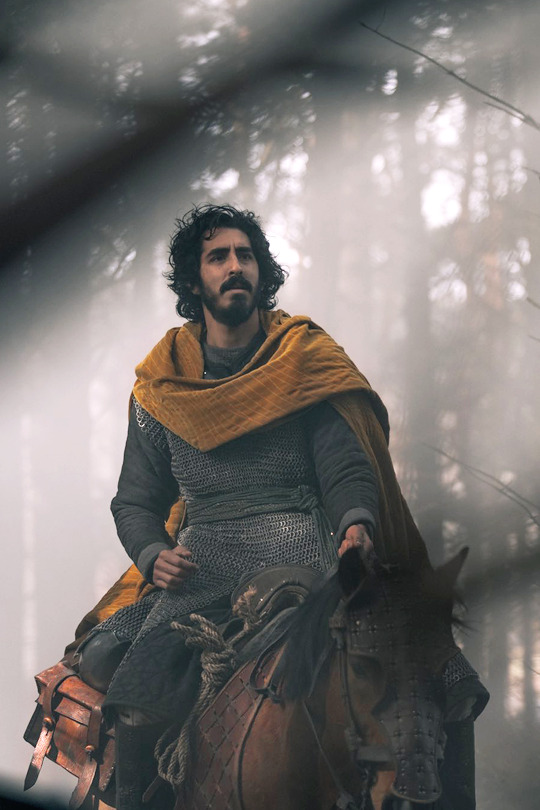
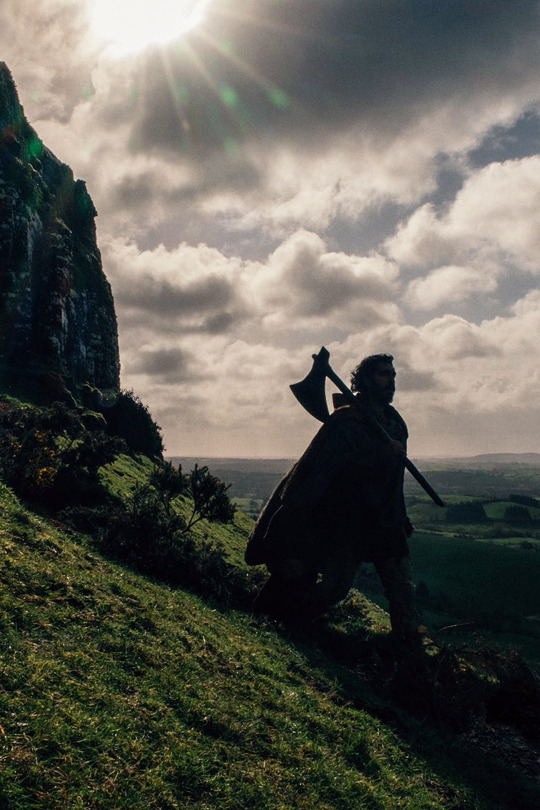
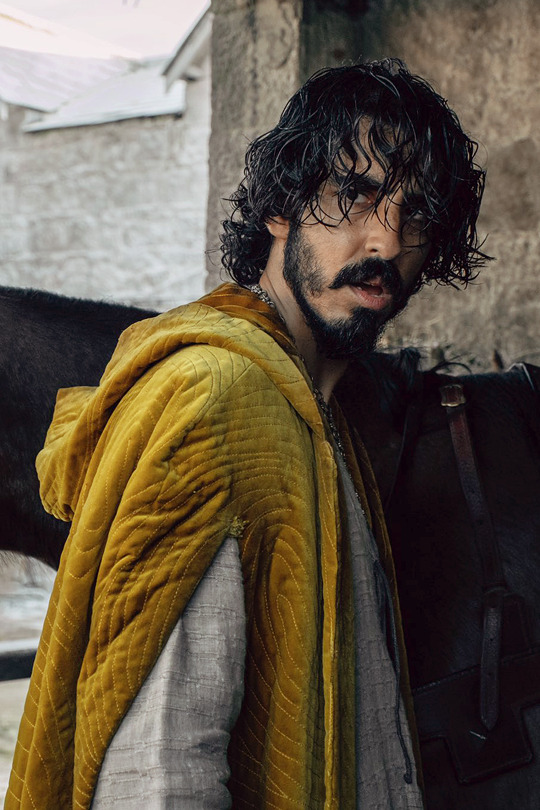
DEV PATEL “The Green Knight” | 2021, dir. David Lowery
25K notes
·
View notes
Text
How To Write Deep Friendships
@writinghaven on instagram [SOURCE: kingdompen.org]
Good friendships can turn an okay story into a memorable one. Not only do friendships make the readers care about the story more, it adds more emotional weight to the story. But here is the problem: good relationships are difficult to write. You thought writing romance was difficult? Well, writing friendships is a whole different level of difficulty. Romances usually rely on professions of love and staring into one another’s eyes for lengthy periods of time. But how do you develop great friendships? So today, I am going to give you 6 things you need to do to develop your friendship.
1. Make Each Character His Own Person
If a character’s only purpose of the story is "be the friend", then I guarantee you that he is going to be a flat and uninteresting character. This will ultimately lead to a friendship that no reader will be invested in.
All the same character creation rules apply to your friend too.
I am surprised by how many times this occurs in stories. You have your main character, and then his 1-dimensional friend who might crack a joke every once in a while.
So before you move onto the next step, flesh out both of the characters in your friendship.
Do both of these characters have a history? Passions? Dreams? Values? Internal journey? Other relationships? Friends? Family?
2. Give Them Something in Common
Now that you have established that these two characters are their own persons, you need a reason for them to be friends. What brought them together? What makes them friends? What gives them a reason to hang out with each other?
You need to give them similarities. This can be a number of different things: Status, Hobbies, Struggles, History, Background, Interests, Enemy, Goals, Dreams
This gives them a common ground, and from then on, the two of them are able to communicate and get along better.
So what makes your two friends similar? How can they bond over these similarities? How do these similarities connect them in a meaningful way?
3. Give Them Meaningful Differences
With meaningful differences, your two friends can help support their strengths and build them up during their times of weakness. This all leads to a strong friendship.
Here are some great ways to give them differences:
Skills (Example: One friend might be good at coming up with plans, while the other friend might be good at improvising when the plan goes awry.)
Conflict Resolution (Example: They are in an argument. One friend might try to talk things out in a diplomatic way, while the other friend just likes to play devil's advocate and throw more heat into the argument)
Personalities (Ex: One is cold and determined and the other is more relaxed and compassionate)
Method of Action: When faced with an obstacle, how does each friend try to get around it?
Reaction: The two friends will also react differently to major events or situations. For example, one might have a relatively negative reaction, while the friend will have a positive reaction that aids them through the challenge.
4. Give Them a History That Shines Through
If your two friends have known each other for a while now, by no means do you want them to seem like they just met each other yesterday.
What you need to do is throw out hints that these friends have known each other for a while. You need to make the readers curious about these two friends and their history with each other.
And even if your characters meet within the timeline of the story, sneaking in hints that these characters are learning more about each other is a great way to develop your friendship.
How can you show this?
Here are a few ways to show that they have a history with each other: Inside jokes, silly and ongoing bickering, unrivaled closeness, nonverbal communication, etc.
5. Create Meaningful Scenes
Now that you have all the key components to an amazing friendship, it’s time to develop it through your story.
Insert a few key friendship moments in your novel and show your reader the power of this relationship.
6. Don’t Make Their Relationship Perfect
If you can nail down all the other 5 points, you are on your way to a pretty perfect friendship.
Wait a minute. You don’t want a perfect friendship.
People aren’t perfect, and your friends can’t get along together all the time.
I’m not saying that you should stuff in a bunch of contrived conflicts between your friendships.
Instead, set up situations that will naturally occur because of who these characters are, and what they believe. (This is why step 1 is so important)
Maybe their differences get the better of them.
Maybe they react differently to a pivotal event in your novel.
Maybe one of the friend's internal demons gets the better of him, and the other friend has to call him out on it. This only results in more tension between them. This is an especially brilliant method to enhance a character arc.
Are the friendships in your novel too perfect? How can you add complexity to their relationship? What character differences and character flaws must these two friends overcome in order to keep their friendship intact? How do they overcome these obstacles? And how does their friendship deepen as a result?
If you can figure that out, your friendship will rise to a whole new level.
These tips can apply to pretty much any relationship. Lovers. Siblings. Frenemies.
So the next time you sit down to write a friendship, ponder these tips and keep them in mind.
235 notes
·
View notes
Text
Writing Theory: Controlling the Pace

Pacing is basically the speed of which the action in your story unfolds. Pacing keeps the reader hooked, helps to regulate the flow of the story and sets the tone of the entire book. So how can we write it?
Genre & Tone

Really in any novel the reader has an expectation that the book will be fast paced or slow. Readers will go into an action novel, expecting it to be fast paced. Readers will pick up a romance novel and expect it to follow a steadying climb of pace as the story goes on.
Pace is a good indicator of how the story is going to feel. If you want your readers to feel as if they are in a calm environment, you don't place the events immediately one after the other. If you want your readers to feel some adrenaline, you keep the curveball coming.
How to utilise Pacing successfully
1. Give your readers time to recover

When readers are reading a fast-paced novel, they need a breather and so do you and your characters. By peppering in a few moments between peaks of fast pace, you are allowing your readers to swallow down what they've just read and allows you to explore it further. Consider this like the bottle of water after a run. You need it or you'll collapse.
2. Track Events Carefully

When planning your book's outline or at least having a vague idea of it, you have a fair idea when things are going to happen. Usually books have an arc where pace gets faster and faster until you get to the climax where it generally slows down. If you're writing a larger book, you have to space out your pacing properly or else your reader will fall into a valley of boredom or find the book a bumpy ride. The climax should have the fastest pace - even if you start off at a high pace. Your story always should peak at the climax.
3. Localising Pace

If you want to put your reader into a certain state of mind throughout a chapter or even a paragraph, pay close attention to your sentence bulk. Long flowy sentences but the reader at ease, slowing the pace for them. Short, jabby sentences speed things up. An argument or a scene with action should be quick. A stroll through a meadow on a lazy summer's noon should be slow.
4. Information is Key

When writing pace in your overall novel, the reader should be given more information as you go through the story. You begin any story estentially with the who, what, where of everything. But peppering in all the whys, you broaden the story and keep the reader feeling more able to keep up with everything. For example, in any murder mystery your reader is given the body. As the story goes on, your reader should be given more and more information such as the weapon, the where until you get to the climax.
5. Off/On Stage

All events of the story do not need to be shown on stage. When you want to slow things down, allow things to happen away from the readers view. If you show event after event at your readers, everything is at a faster pace.
940 notes
·
View notes
Text
Writing US Military Characters
This is a non-exhaustive list of some common ‘quirks’ or habits that can give away a character’s military experience. Wrote it up for myself and it’s particularly useful when I want to show instead of tell. These are based on first person accounts from several vets! Thought others might like to use it too for a reference :D Ones with * or ** came up particularly often.
Like any guide, it’s just that - a guide, not a set of rules! A character is unlikely to do all of these, and other factors like ADHD, trauma, or just personality might effect what sticks. People are endlessly diverse!
Eat, Drink, Dress, and Rest
* High tolerance for physical discomfort
** Eat very fast, and aren’t picky about the taste
** Can sleep anywhere - on a helicopter, in enemy territory, up high, underground, when it’s loud, when it’s quiet
* Can operate effectively without sleep for over 24hrs, or with erratic and limited sleep for days
** Wake up early, 0500-0700; Wake up quickly and ready for action
* Hair cut regularly. Beards stay clean shaven (alternatively some may avoid shaving when out of uniform)
** Dress practically and neatly, jackets buttoned/zipped up, ironed, polished
Take hat off indoors
Organization and Talents
Gearhead
Gun nut
Detail oriented
** Pockets are meticulous. The same thing always goes into the same pocket, for easy reach. Pockets never full to bulging. Carry multitool.
** Hands stay out of pockets - ready. (Hands in pockets is forbidden in the military. Some Special Forces may keep their hands in pockets, as their ‘grooming’ rules are less enforced. Because they can)
Always carry things with left hand (and ”southpaws” must learn to use standard right-handed weapons)
** Know how to clean house and keep it organized (may choose not to out of uniform)
** Can make bed and shower fast
Organize clothes to be able to dress and maneuver their own space in pitch black (Navy specifically)
Know how to sew basic repairs (i.e. a button)
Layout items before packing. Tight roll clothes. Pack efficiently
** Can read maps effectively, may prefer them to a GPS, use landmarks
Deadlines not always considered concrete (There is a military mantra, “Hurry up and wait.” Often one would be told to complete something or arrive somewhere at a certain time, but nothing would happen due to someone else’s task meant to be finished earlier still being incomplete)
** Alternatively (or in tandem), arrive 5-30 minutes early to every event
Things kept packed securely in the car, “ready for sea” and “heavy rolls” (Navy specifically)
Routines and Social
** Respect for the “Other” or “Them” - other religions, cultures, races, and ethnicities - had to work crammed together with a diverse group that may have strongly opposing viewpoints, and learn to trust each other to have their backs in dangerous situations (For many, military is their first real experience with different cultures and beliefs)
* Respect ≠ Like. Will go above and beyond for a respected leader, even if they are disliked
Deeply suspicious of red tape, bureaucracy, and bosses on power trips, and will only do the minimum required for these
** Low tolerance for slacking/job skirting
* Volunteer other people for tasks, and willing to be volunteered for things
Don’t ask people to do things they aren’t willing to do themselves
Still follow orders of bosses they dislike. Still have the backs of coworkers they dislike
** Like clear orders, responsibilities, chain of command, and penalties
* Have Plan A, Plan B, and Plan C
Actions matter more than ceremony; definite respect for processions, but excessive reverence for the flag/anthem/etc viewed as posturing rather than true patriotism
High tolerance for boredom
** Adaptable, high stress tolerance, work efficiently, self reliant
** Avoid having their back to an opening (windows/doors/etc) or sitting anywhere someone can sneak up on them from
* Avoid loud, crowded areas, check perimeters, barricade doors, sleep last in a group (may coincide with PTSD)
Always walk on the right side of a road/grocery aisle/etc
Stand at parade rest, walk cadence, walk fast
* Walk quietly, even in boots, sneak quickly (military crouch run)
De-escalation in violence - in protective armed situations the standard is: 1) multiple warnings, 2) warning shots, 3) shoot to incapacitate. Shoot to kill is a last resort. (not following these steps could get an ally or potential ally killed) In verbal disagreement, resolve an issue before it escalates
* Wariness toward and tendency to feel Other’ed by civilians
* Immediate acceptance toward other military, expectation of shared values
Vernacular
Observe before speaking in a situation, only speak if it seems significantly important to
Refer to people as “Sir” or “Ma’am”
** Speak directly, make direct eye contact (sometimes comes off as rude, often intimidates)
* Don’t take criticism or disagreement personally, expect others not to, either, and will point out flaws even to superiors (but again, orders are respected)
** Clear communication, acknowledge messages by replying, even if that’s just a thumbs up or down
** Swearing. Lots of swearing. Every other word is swearing
** Dark sense of humor, and racist/sexist jokes - not indicative of individual’s actual belief system or violent tendencies
Unbothered by angry yelling, angry quiet people are more concerning
** Point with ‘knife hands’, not just a single finger
** Use a 24 hour clock instead of a 12 am/pm; i.e. 0800 hours, not 8am (Called ”Military Time” in the US)
Describe locations by o’clock directions, i.e. dog standing at 6 o’clock
* Write out dates as day-month-year (US usually does month-day-year) i.e. 21Oct57
** Use phonetic alphabet to spell things out, or at least have it memorized
** Habitually use military terms or sayings, including:
Good to go - Mission ready, ready to proceed
Squared away - Compliment indicating exemplary service
Popping a smoke - Need to get out of here [From using smoke grenades to call helicopters for extraction]
“Sir yes sir” [A ‘sir sandwich’]
FUBAR - F*cked up beyond all recognition
SNAFU - Situation normal, all f*cked up
TARFU - Things are really f*cked up
BOLO - Be on the lookout
ATL - Attempt to locate
IAW - In accordance with
Civilian - Non-military person
Roger - Message received and understood
“Say again your last.” - What?
Firearm- Gun
Ruck - backpack
March - walk
Double time - running
PT - working out
Rally point - meetup
Field day - Spring Cleaning (Navy specifically)
Get smoked - Laps, pushups, etc as punishment
4K notes
·
View notes
Text
How to write a character with glasses
A guide for anyone wanting to write characters with glasses, but doesn’t know how yet.
Different types of visual impairment
Near-sighted – not being able to see stuff in the distance
Far-sighted – not being able to see stuff up close
Presbyopia – easier in German: Altersweitsichtigkeit = elderly far-sightedness, not being able to read small print when you’re older, sometimes end up being far- and near-sighted at the same time
it’s also pretty normal to have different prescriptions for both eyes, one being stronger/weaker than the other one
Different types of visual aids
Eyeglasses with actual glasses – easier to break, so more dangerous, can be grinded and polished differently than other material
Plastic glasses – lighter than the real glass, not that easy to get damaged
Reading glasses – only needed for reading and driving
Monocle – old-fashioned aesthetic
Bifocals – glasses that correct presbyopia, bottom is seeing closer, top for seeing in the distance
Contact lenses – different types (post about it coming soon)
How to write it?
think about what kind of visual impairment does your character have?
what are they able to see?
can they see basically everything, but cannot read correctly?
can they see enough to get by, but cannot read and drive and get headaches without their glasses?
can they only see blurred images and colours?
do not change it halfway through the story! Choose their impairment and then stick with it.
what are situations where the glasses could hinder them?
are they doing a lot of sport, are they getting into fights, situations where they don’t want to wear them for aesthetic reasons?
can they not do something because of their impairment? (joining security forces, driving big trucks, etc.)
are they annoyed that they have to wear them? Are they only wearing contact lenses or are they just avoiding wearing anything even though they can’t see everything?
you don’t have to make a big deal out of your character wearing glasses, but it does play a big part in your character’s life
remember to put in a few references about it here and there throughout the story
things to consider
glasses fog up
through temperature changes
while going outside or coming in
while sweating
glasses need to be adjusted
they will never stay where they are supposed to be
especially when moving around and keeping your head down
the character will need to adjust them from time to time and push them up again
glasses need to be cleaned a lot
everything will make them dirty
best option are specific cleaners
if you don’t have them handy a shirt will have to do, but it needs to be the right material, synthetic stuff is not working
people with glasses will ask their friends for their shirts if they have to
sunglasses, swim goggles and 3D glasses are impractical
3D glasses need to be over the glasses and it can be tricky to get it right
sunglasses need the right prescription and then you would have to change glasses every time you enter a building
there are clips that go over the normal glasses, but they have to be exact to look fine
swim goggles can also be with prescription, but you would also have to get your glasses as soon as you’re out of the water to take the goggles off and still see enough
there are also special glasses for other sports (it’s not great to do sports with real glasses, because if they break it can severely damage your eyes)
times where you have to take the glasses off
when showering
when going to bed
when putting on shirts with a tight neckline
glasses are expensive
some insurances pay for them, a lot don’t
the worse the eyesight the more expensive they get
glasses and frames are two different things and get sold separately (you can have really expensive glasses in a cheap frame or vice versa)
you also need a spare pair of glasses, if you lose yours or they get damaged (often this is just an old pair, where the prescription is no longer strong enough)
more things to consider
a new partner cannot just take the glasses and throw them to the side, when the fun starts, if it leaves the character without being able to see properly, there needs to be some more trust there
people will take the glasses and put them on, yelling ‘OMG you’re really blind!’ and then ask you how they look like, especially funny when you really can’t see them
people asking ‘how many fingers can you see?’
light hits differently, which means you see light differently and also, it’s hard to take good pictures with glasses
rain is a nightmare, it’s like driving through rain without a windshield wiper
having to be careful on roller coasters and other stuff, because they can and will fly off
you cannot lie in bed (except on the back) without the glasses pressing uncomfortable in your face
mascara definitely will end up on the glasses and getting that cleaned is a nightmare
wearing hats, beanies, giant headphones and even facemasks can be extra annoying, because the arms of the frame will get in the way
you can get headaches from not wearing your glasses, from the pressure of the frame of the glasses and from wearing new and therefore glasses with a stronger prescription
small children love glasses, as soon as they can grab stuff, they will yank them off your face if you let them get close enough
kids will tease you about them, but after middle school it’s not really a thing anymore (mostly and as adults it’s really nothing special)
glasses have blind spots on the sides and top and bottom, so you sometimes have to move your head more
Tropes
Blind without glasses and dropped glasses
I actually only have sharp vision for a distance of 10 cm, which means I would not get home save if I had to cross a street to get to my building without glasses
but I very rarely lose my glasses
so, the trope of someone not being able to see without them is correct in some cases, but it’s definitely not hilarious and there are not often situations where they are just without glasses and fumbling around
Being smart
people wearing glasses can be just as dumb as everyone else
try not to make the only one wearing glasses be the smart kid
The Cure
often found in fantasy books, people will somehow get cured from needing glasses
getting some superpowers that eradicate their visual impairment and ‘fixing’ them
The Makeover scene
I love makeover scenes just like everybody else does
but: it’s not really cool to see the ‘ugly duckling’ suddenly becoming a beautiful swan by throwing away their glasses
and it’s impractical, if they just put them away and it was established that they can’t really see that well without them it’s just stupid to leave them at home
if they get new and cooler glasses, the person giving them to them would have needed to know their exact prescription, glasses are expensive and it takes time before they are ready
if they wear contact lenses from now on, they would also need to know the prescription and if they have never worn contact lenses before it will take some time to get used to putting them in and wearing them
Finally… please write characters with glasses. This sounds like a lot of hassle, but for most people it’s the most normal thing in the world. Studies show that soon half the world population will need glasses and I still didn’t really have a cool girl with glasses as a role model in literature when I grew up. It’s just another form of representation and I hope I can help you with this post to create some cool characters!
If you like my blog and want to support me, you can buy me a coffee! 🥰
3K notes
·
View notes
Text
Totally not me making my ocs on this new character creator trendy website at 3:51 am when I have to get up at 6:40 am....anyway here is some of the crew as a first draft.
To the left we have Lania, The Third Divine Child.
To the right we have Abraj of Kymar, Auvmen the Fourth Divine Child, Ozirein, and Napaul The Second Divine Child.


Anyway writblrs you should use this website it’s free, this has been a PSA
#writer community#writblr#storyteller saturday#the aves egg#writer advice#writer memes#character customization
16 notes
·
View notes
Text
Writing a War
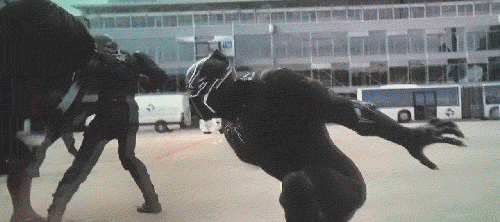
(P.S.A. Before We Begin: While the above GIF is from Captain America: Civil War, I won’t be including any superhero factors in this post. I just really love the movie and this scene specifically :P Enjoy!)
Hello friends, Abby here with another writing post! I’ve noticed that the concept of war tends to play a large role in many of the novels I’ve read in the past. Due to this and the fact that my own series (Smoke Shadows) will include its own war of sorts, I was inspired to make this post. Without further ado, let’s get started!
What could cause a war?
There are, of course, many causes that can lead to a war, and it would probably be a little strange if one occurred in your story for a single reason. Let’s go through a couple of general causes that have played major roles, starting with the M.A.I.N.:
Militarism. Some countries take excessive pride in their militaries and continue building and displaying them, even during peacetime. Often nations that would perceive an action like this as a threat find these acts of militarism unsettling; this can worsen relations between the two nations or can lead the threatened nation to make a preemptive strike of sorts.
Alliances. These can be dangerous, especially secret alliances. A small country might have made secret alliances with several larger nations in secret; someone picks a fight with them and suddenly there are six other nations on their case about it. Alliances made like these are the ones that can and probably will lead to conflicts involving more countries.
Imperialism. Simply put, imperialism is the process of “stronger” nations taking over “weaker” ones for control of some sort, and usually without the consent of the country they’re taking over. (Imperialistic nations don’t seem to care much about that last part, though.) Imperialism could lead to conflict in the form of a “turf war” of sorts between imperialistic nations or to a fight for independence by the nation that’s been taken over.
Nationalism. This one is dangerous, because it often comes from a feeling of unity in a nation. This pride can range anywhere from slight to intense and can be created in whatever way you want, but a historically proven way to use this method is through things like propaganda and yellow journalism.
At least one of these four reasons play some sort of role in the starting of a war, though of course there are many other causes you could choose from. Some of these possibilities can include completely unprecedented attacks, economic/territorial gain, religion, revenge of some sort, and (intense) internal disagreements.
How to “Structure” a War
Wars are usually won not through brute force alone, but by strategy. You’ll want to keep this in mind when you think of how your war plays out; whoever is the better strategies will have a higher chance of coming out of this whole thing victorious. It will probably help tremendously for you to draw a map of your world and include every place that will be affected, then get some different colored markers to represent the different sides.
It’s especially helpful if you can make two maps, or one that you can edit easily. On one you’ll want to create a plan for each side. If you were planning out something like this, what would you plan for? Include things like:
Attack points and any (possibly) ensured victories
Retreat plans
Key areas that this side will need to win
Other people that will be travelling with the troops
Amount of troops sent to each place
Methods of communication and transportation
Weaponry used
Any rules going on (ex. don’t go after civilians, leave injured soldiers to be healed since they are no longer a threat, etc.)
There are, of course, other things to consider, but if you’re just looking for the basic information then all this should be a good starting point for you. Next up comes the results, where you take the time to figure out how each battle/conflict/whatever you’d like to call it turned out. Think of things like:
Casualties
Injuries
Prisoners of war or any M.I.A.s
Total resources used
Damage done to the surrounding area
Whether each group should completely invade, draw back, or stay where they are
Essentially, whether the conflict was a victory, defeat, or stalemate for each side
From there, you’ll want to figure out how each side will adapt to this result. The best strategizers respond to the events of this conflict will often assess their side and the other side, and change their plans a little to try and help their side regain (or keep) the advantage.
Rinse and repeat until you’ve created a war.
The Home Front
What is everyone doing at home to help this effort, if anything at all? How are people responding to the war? Consider things like governmental actions and the civilian response, and what people at home might be asked to do to aid the cause. From a governmental perspective, think of things like:
The possibility of a draft
How they would get their funding
How much control (if any) it would take over everyday life
Any new laws that might be passed
The changing of alliances
Deciding on whether or not to declare war (additionally, admitting defeat or making an attempt to find peace)
The need to prevent something like an economic depression afterwards
Trading with countries they’re not actively fighting against
You’ll also want to consider things like propaganda. It’s often a “strategy” used to increase morale at home and to help unify the nation during wartime. This can be used for a lot of purposes, but it’s often to 1) encourage those who would be able to enlist to do so or 2) encourage those who can’t enlist to still find ways to help the country.
Some other things that might change in the home life include:
Work and education standards
Anything that goes into and out of a person’s bank account (or the equivalent); things like taxes and pay grades might change
The possibility of rationing, if needed
People spending more free time helping out in the effort
How people would react to family being sent away to fight (and the possibility of bad news being brought back)
The demand for different jobs and how this demand might be met
Any major changes in priority for the people as a whole
Ending the War
And finally, we’ve made it to the end! One way or another, things are going to come to a close on this conflict. It might have been a month, a year, or a decade since the initial declaration of war, but we’ve made it. What comes with the end of a war can vary in essentially every way you can imagine. You’ll want to consider things like:
Treaties (including things like alliances that might have been formed or come to an end, war reparations, punishments, etc.)
Any measures meant to prevent another war of this nature
Things being done to help any countries on which the war was fought, if anything at all
Lasting feelings that might lead to future conflicts or developments
And that’s all I’ve got for today, I hope this helped! If there’s anything you want to see me write about in my next post, please don’t hesitate to leave a message in my ask. Until next time, much love! <333
6K notes
·
View notes
Text
Alright after I do the dishes and the laundry and make myself some coffee.. watch out it's time to write
7 notes
·
View notes
Text
More scary waters, by popular demand!
Since my last post ranking bodies of water really, really blew up, I decided to make a second. Some of these were suggested by people (in which case I’ll credit them), and some were just ones that didn’t quite make the cut for the first list.
I’ll also be doing a third list ranking the most toxic bodies of water in the world, so stay tuned for that.
Also, keep in mind that these aren’t ranked by how dangerous they are. They’re ranked by how scary I, personally, find them. So if the rating seems off, it’s due to which ones inspire a visceral reaction in me and which ones don’t.
Silfra Rift, Iceland

This one is something that I actually find very beautiful rather than scary, but it still seems like something that others might be freaked out by. The Silfra Rift is the point where the Eurasian and North American continental plates are pulling apart, creating a crack in the earth that filled with water. The water here is incredibly clear, and you can see all the way down to the bottom even in the deepest spots (which are almost 200 feet down, by the way). It’s the only place in the world where you can put your hands on two different continents at the same time! I’ve had the privilege of snorkeling here, and although it’s definitely deep, I wasn’t terribly scared due to the fact that the rift is just so beautiful. The only danger to swimmers is the temperature; it stays between 35-39 F year-round, meaning anyone getting into the water needs a full drysuit to avoid getting hypothermia or worse. I give the Silfra Rift a 1/10 fear rating because I thought I would be much more freaked out by it than I was.
Dragon Hole, China
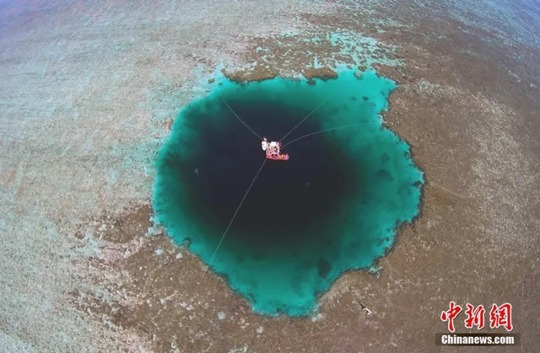
While not as visually striking as the Great Blue Hole in Belize, this sinkhole in China is the deepest “blue hole” in the world. This pit descends 987 feet down. This earns a 2/10 purely because this is just a goddamn hole in the ocean that’s almost 1,000 ft deep and I don’t care for that.
Lake Tanganyika, multiple countries (suggested by @iguessiamhere)
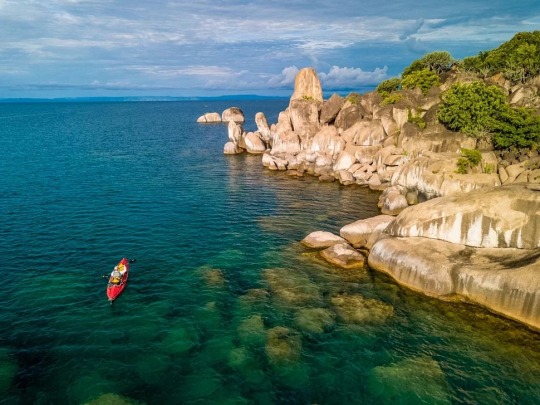
This lake didn’t quite make the cut for the first list because it comes in second to Lake Baikal. It’s the second-oldest, second-deepest, and second-largest (by volume) lake in the world. But someday, Lake Tanganyika may be number 1, because just like Baikal, it’s a Rift Valley. It’s getting bigger every day, and in a few million years when Baikal is an ocean, Tanganyika might be the largest lake by default. Its 4,820 ft depth earns it a 3/10.
Lake Superior, US/Canada (suggested by multiple people)

This is the largest of the Great Lakes, and the third-largest lake in the world. It reaches depths of over 1,000 feet and has a surface area of over 31,700 square miles. Lake Superior is the site of over 350 shipwrecks and contains roughly 10,000 dead bodies. The reason these bodies are never recovered is because the lake is very cold, and very deep. The lake bottom is essentially a sterile environment, where bodies are preserved for eternity instead of floating up as a normal body would. This lake holds onto her dead. 4/10 for sheer danger and alarming amount of dead bodies.
Cenote Angelita, Mexico ( @olive-k wanted a cenote, and this list has two!)

This is a cenote with an underwater river running through it. No, I’m not kidding. Underwater rivers are actually quite common, but they rarely exist in places that humans can see them. Usually they’re caused by a current moving in a different direction than the majority of the water, or a boundary between water with different density (as is the case here). The “river” appearance in Angelita is enhanced by dead trees, giving the appearance of a bank. For the first 100 feet, this cave has regular freshwater. But a little deeper lies a layer of hazy hydrogen sulfate, and beneath that is 100 feet of salt water. This ranks 5/10 because can you imagine descending towards a hazy patch of water and branches that you assume is the bottom, only to pass right through it and see a gaping black expanse beneath? No thanks.
Devil’s Hole, Nevada
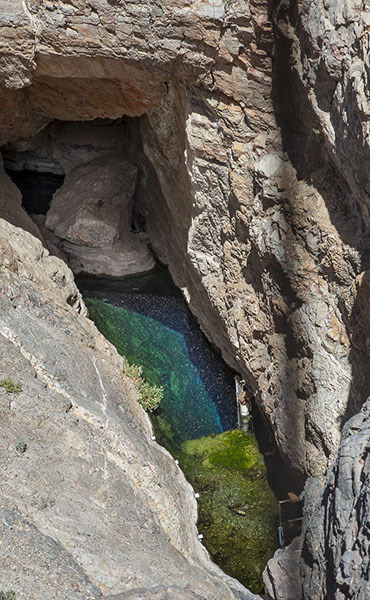
As a biologist, this is somewhere that I actually want to visit. This tiny waterhole in the desert is the only place that the endangered Devil’s Hole Pupfish lives. But we’re not here to learn about cute fish, we’re here to read about unsettling waterways. And hooo boy, this one is pretty weird. Because despite its appearance, this isn’t a little rainwater pool. It’s the opening to a huge cave system, which reaches depths of at least 500 feet. We’re not totally sure, though, because the bottom has never been mapped, and several people have died trying to attempt it. 6/10, since it’s very deep, hasn’t been fully mapped, and is apparently haunted.
Eagle’s Nest Sinkhole, Florida

There is literally a sign in front of this sinkhole that reads “STOP. Prevent your death. There is nothing in this cave worth dying for” accompanied by a picture of the Grim Reaper. Need I say more? Probably not, but I will anyway. This sinkhole is the only surface opening to a cave system that stretches several miles and plunges to over 300 feet deep. Miles of twisting, confusing, narrow passages with only one exit make for an extremely dangerous cave system. For some fucking reason, it’s a very popular dive site. At least 11 people have died here since the 80’s, and is referred to as the “Underwater Mt Everest” because of how dangerous it is. 7/10.
Zacatón, Mexico

This cenote was literally considered “bottomless” for a long time, because no one could find the bottom. Multiple expeditions were attempted, including one where a man died after reaching 925 feet without finding the end. It took a multi-million dollar operation funded by NASA to find the bottom of this hole. I’m not kidding. Turns out, it’s 1,099 feet deep, making it the deepest cenote in the world. It disturbs me that it took NASA and a robot designed to map alien moons to locate where this hole ended, so it earns an 8/10.
Saltstraunen, Norway (suggested by anon)

This narrow strait is home to the strongest tidal currents on the planet. Roughly 110 billion gallons of seawater move in and out of this corridor every six hours, creating violent currents. These tidal movements are so strong they create a phenomenon very similar to the whirlpool in Scotland—the Saltstaunen Maelstrom. This vortex is 33 feet across and forms four times a day as the tides go in and out. Although this whirlpool is only 16 feet deep (very shallow compared to Scotland’s) the currents alone would probably destroy you if you ever fell into this strait. 9/10 because damn.
Blue Lake, Russia

Despite having the least creative name of all time, the Blue Lake is anything but boring. Like the Zacatón, this lake had a reputation for being bottomless for a long time. A diver died after descending to 394 feet, and another barely survived after going down to 685 feet. Neither found the bottom. Eventually, the bottom was discovered and it came as a surprise. The lake itself is only 770 ft by 426 ft, but it is 846 ft deep. This lake is deeper than it is long. It is also a constant 48 degrees F, making hypothermia a risk for any swimmers. If that’s not bad enough, it’s also full of hydrogen sulfide, which makes the air around the lake potentially dangerous. However, people do still dive here on occasion (mostly for research purposes) and the lake is surprisingly beautiful beneath the surface. Still, that doesn’t make it any less deep, cold, and poisonous, so this is a 10/10 for me.
Honorable mention: The Mariana’s Trench, because although it’s not really a specific body of water it’s the deepest point in the ocean, at 7 miles below the surface!
10K notes
·
View notes
Text
Here it is folks:
My definitive ranking of my least favorite bodies of water! These are ranked from least to most scary (1/10 is okay, 10/10 gives me nightmares). I’m sorry this post is long, I have a lot of thoughts and feelings about this.
The Great Blue Hole, Belize

I’ve been here! I have snorkeled over this thing! It is terrifying! The water around the hole is so shallow you can’t even swim over the coral without bumping it, and then there’s a little slope down, and then it just fucking drops off into the abyss! When you’re over the hole the water temperature drops like 10 degrees and it’s midnight blue even when you’re right by the surface. Anyway. The Great Blue Hole is a massive underwater cave, and its roughly 410 feet deep. Overall, it’s a relatively safe area to swim. It’s a popular tourist attraction and recreational divers can even go down and explore some of the caves. People do die at the Blue Hole, but it is generally from a lack of diving experience rather than anything sinister going on down in the depths. My rating for this one is 1/10 because I’ve been here and although it’s kinda freaky it’s really not that bad.
Lake Baikal, Russia
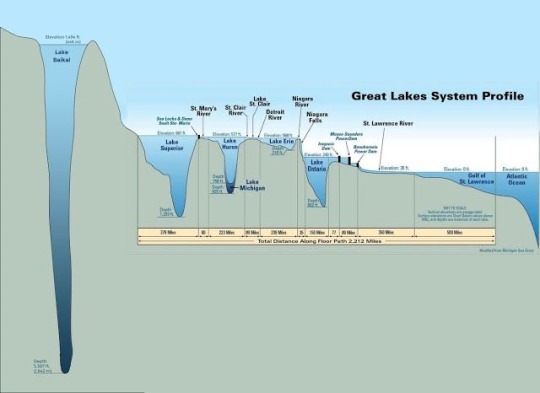
When I want to give myself a scare I look at the depth diagram of this lake. It’s so deep because it’s not a regular lake, it’s a Rift Valley, A massive crack in the earth’s crust where the continental plates are pulling apart. It’s over 5,000 feet deep and contains one-fifth of all freshwater on Earth. Luckily, its not any more deadly than a normal lake. It just happens to be very, very, freakishly deep. My rating for this lake is a 2/10 because I really hate looking at the depth charts but just looking at the lake itself isn’t that scary.
Jacob’s Well, Texas

This “well” is actually the opening to an underwater cave system. It’s roughly 120 feet deep, surrounded by very shallow water. This area is safe to swim in, but diving into the well can be deadly. The cave system below has false exits and narrow passages, resulting in multiple divers getting trapped and dying. My rating is a 3/10, because although I hate seeing that drop into the abyss it’s a pretty safe place to swim as long as you don’t go down into the cave (which I sure as shit won’t).
The Devil’s Kettle, Minnesota

This is an area in the Brule River where half the river just disappears. It literally falls into a hole and is never seen again. Scientists have dropped in dye, ping pong balls, and other things to try and figure out where it goes, and the things they drop in never resurface. Rating is 4/10 because Sometimes I worry I’m going to fall into it.
Flathead Lake, Montana
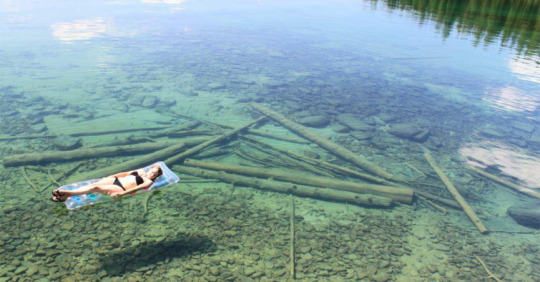
Everyone has probably seen this picture accompanied by a description about how this lake is actually hundreds of feet deep but just looks shallow because the water is so clear. If that were the case, this would definitely rank higher, but that claim is mostly bull. Look at the shadow of the raft. If it were hundreds of feet deep, the shadow would look like a tiny speck. Flathead lake does get very deep, but the spot the picture was taken in is fairly shallow. You can’t see the bottom in the deep parts. However, having freakishly clear water means you can see exactly where the sandy bottom drops off into blackness, so this still ranks a 5/10.
The Lower Congo River, multiple countries

Most of the Congo is a pretty normal, if large, River. In the lower section of it, however, lurks a disturbing surprise: massive underwater canyons that plunge down to 720 feet. The fish that live down there resemble cave fish, having no color, no eyes, and special sensory organs to find their way in the dark. These canyons are so sheer that they create massive rapids, wild currents and vortexes that can very easily kill you if you fall in. A solid 6/10, would not go there.
Little Crater Lake, Oregon
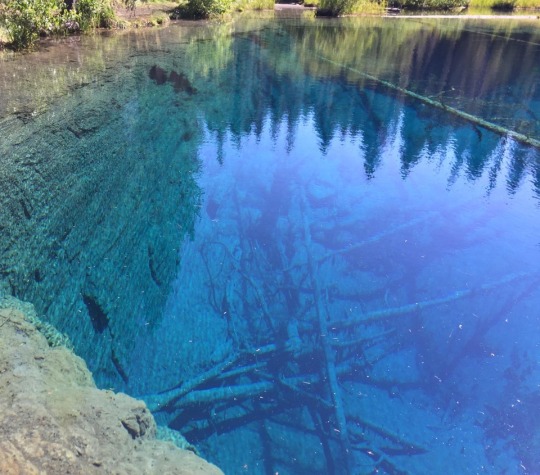
On first glance this lake doesn’t look too scary. It ranks this high because I really don’t like the sheer drop off and how clear it is (because it shows you exactly how deep it goes). This lake is about 100 feet across and 45 feet deep, and I strongly feel that this is too deep for such a small lake. Also, the water is freezing, and if you fall into the lake your muscles will seize up and you’ll sink and drown. I don’t like that either. 7/10.
Grand Turk 7,000 ft drop off

No. 8/10. I hate it.
Gulf of Corryvreckan, Scotland
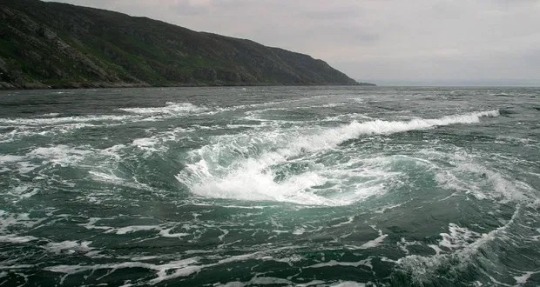
Due to a quirk in the sea floor, there is a permanent whirlpool here. This isn’t one of those things that looks scary but actually won’t hurt you, either. It absolutely will suck you down if you get too close. Scientists threw a mannequin with a depth gauge into it and when it was recovered the gauge showed it went down to over 600 feet. If you fall into this whirlpool you will die. 9/10 because this seems like something that should only be in movies.
The Bolton Strid, England
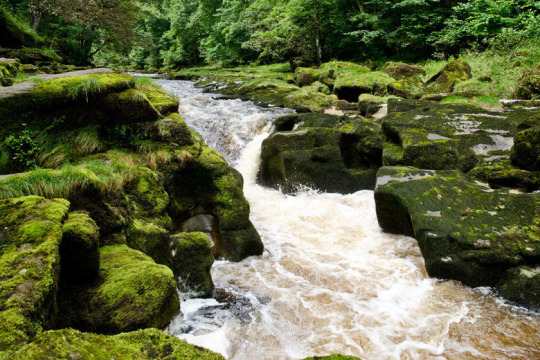
This looks like an adorable little creek in the English countryside but it’s not. Its really not. Statistically speaking, this is the most deadly body of water in the world. It has a 100% mortality rate. There is no recorded case of anyone falling into this river and coming out alive. This is because, a little ways upstream, this isn’t a cute little creek. It’s the River Wharfe, a river approximately 30 feet wide. This river is forced through a tiny crack in the earth, essentially turning it on its side. Now, instead of being 30 feet wide and 6 feet deep, it’s 6 feet wide and 30 feet deep (estimated, because no one actually knows how deep the Strid is). The currents are deadly fast. The banks are extremely undercut and the river has created caves, tunnels and holes for things (like bodies) to get trapped in. The innocent appearance of the Strid makes this place a death trap, because people assume it’s only knee-deep and step in to never be seen again. I hate this river. I have nightmares about it. I will never go to England just because I don’t want to be in the same country as this people-swallowing stream. 10/10, I live in constant fear of this place.
Honorable mention: The Quarry, Pennsylvania
I don’t know if that’s it’s actual name. This lake gets an honorable mention not because it’s particularly deep or dangerous, but it’s where I almost drowned during a scuba diving accident.
192K notes
·
View notes
